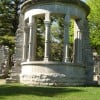- HubPages»
- Travel and Places»
- Visiting Europe»
- United Kingdom
Visiting Castell Coch at Tongwynlais, Wales: an imposing Victorian, Gothic-Revival castle
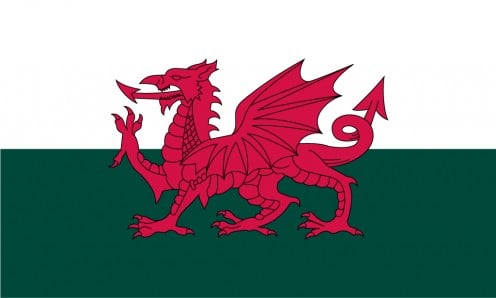
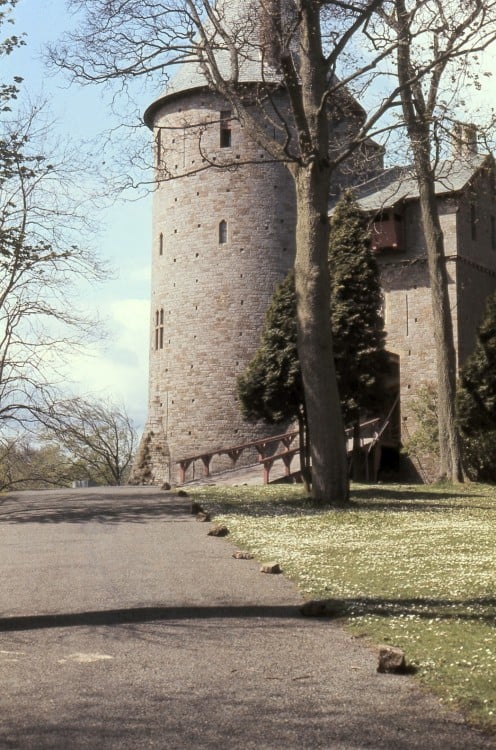
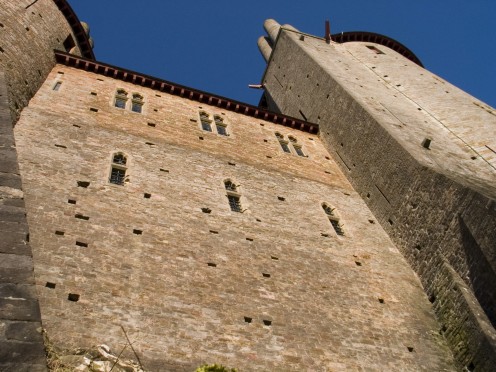
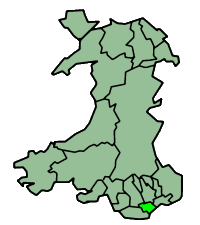
Truly Medieval, or a fantasy?
At Tongwynlais, in the Glamorgan (Welsh: Morgannwg ) county of Wales (Welsh: Cymru ), a major visitor attraction is the hillside castle known as Castell Coch . This name, in Welsh, literally means 'red castle'.
For many visitors to South Wales, the first sight of Castell Coch that they will remember will be its striking profile overlooking the M-4 freeway artery which links Wales's capital, Cardiff (Welsh: Caerdydd ) with east-west destinations. It certain looks like a Medieval castle, and a remarkably well-preserved one, at that.
Some history
For those who delve deeper into its history, it will be learned that the prominent structure on the hillside at Tongwynlais was actually erected in the 19th century by local landowner, John Crichton-Stewart , 3rd Marquess of Bute. Since Wales and the United Kingdom have many intact, Medieval castles, the temptation for some people is thus to consider Castell Coch a Victorian folly, albeit a grand and habitable one. However, the reality is more complex.
Castell Coch is actually built on the site of a 13th century castle, built for Ifor Bach , a Welsh chieftain. Subsequently possessed by the de Clare family, it was badly damaged in a 14th century conflict, and is known to have fallen into disused for some centuries. When the architect William Burges (1827-1881), working for the 3rd Marquess of Bute (1847-1900), drew up plans for a new structure, the aim was, according to Castell Coch 's Official Guide (dated 2005, p. 3), to link 'sumptuous Gothic fantasy with timeless fairy tale'.
So, what do you think?
If you have the opportunity to visit Castell Coch , as I did years ago, you will maybe agree that there is an other-worldly atmosphere to this remarkable place, as you approach its looming features topped with a pointed tower.
There is something else the reader needs to know when he or she considers this castle, in its 19th century re-creation. Its original owner was reputed by some as being the richest man in the world; by others, as being on the verge of bankruptcy. Be that as it may, but the varying pressures on this industrialist and magnate, who also built Cardiff Castle, meant that Castell Coch took a long time to build. Added to this was the death of the architect in 1881. The castle was not complete until 1891, and its owner never took up residence.
Further features
Carboniferous sandstone was used, in Gothic Revival design. The interior contains many artistic features which combine numerous allegorical and historical references, mainly Medieval in inspiration.
A drawbridge has been included. So have holes in walls, through which vistors could be good humouredly mocked by the notion that Medieval-style boiling oil could be poured on them by way of defence. Its height is 25 metres, but in my view seemingly higher, given its hillside location.
Also worth seeing
Cardiff (distance: 7.7 kilometres) has fine buildings, structures and cultural treasures too numerous to mention adequately here, but some of these include: Cathays Park (Welsh: Parc Cathays ), with its gardens, the National Museum Cardiff (Welsh: Amgueddfa Genedlaethol Caerdydd ), which contains the Prince of Wales 's regalia, and the City Hall (Welsh: Neuadd y Ddinas ) with its Marble Hall containing statues of many historical personalities associated with Wales, including King Henry VII , Owain Glyndŵr, Dewi Sant/Saint David, Medieval Chronicler Gerald of Wales ( also known as Giraldus Cambrensis or Gerallt Gymro), Bible translator William Morgan , Medieval poet Dafydd ap Gwilym, and the hymnwriter William Williams Pantycelyn. Cardiff Castle is open to the public, and has been known to host deliberations of the United Kingdom Parliament's House of Commons' Welsh Affairs Committee.
Llandaff Cathedral (distance: 5.9 kilometres) is a striking structure, set among Medieval ruins.
Caerphilly (distance: 7.3 kilometres), has Wales's largest castle, dating from the 13th century.
St David's (distance: 174 kilometres), has an ancient cathedral situated near Wales's westernmost point.
Tintern Abbey (Welsh: Abaty Tyndyrn ; distance: 57 kilometres), is a Medieval Abbey, now in ruins, situated on banks of the Wye River (Welsh: Afon Gwy ).
Hay-on-Wye (Welsh: Y Gelli Gandryll ; distance: 86 kilometres) is a market town with a Medieval Castle, and a large number of bookstores, to which industry the economy of the town is substantially devoted.
...
How to get there: Continental Airlines flies to London Heathrow Airport , from where car rental is available. London Heathrow is approximately 242 kilometres from Tongwynlais, mostly along the M-4 motorway. There are fast railroad links between London and nearby Cardiff. Please note that some facilities mentioned may be withdrawn without notice. Please check with the airline or your travel agent for up to date information.
MJFenn is an independent travel writer based in Ontario, Canada.
Other of my hubpages may also be of interest
- Visiting Wales's Llandaff, Cardiff, with its Cathedral and Close: architecture and history intensely
- Visiting Hay-on-Wye, Wales: books galore and a ruined castle
- Visiting St. David's, Wales: Cathedral village on the edge
- Visiting the island of Lundy, England: bird-watching and isolation
- Visiting Cobh, Ireland: picturesque harbour town with a tragic past
